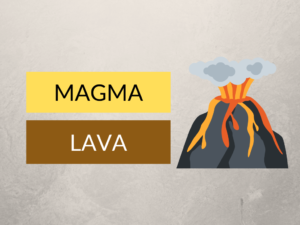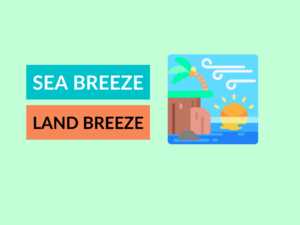Difference Between Magma and Lava
Magma and lava are both molten rocks, but they have some distinct differences. In this article, we will explore what magma and lava are, provide examples, discuss their uses, and highlight the main differences between them.
What is Magma?
Magma is a molten rock substance beneath the Earth’s surface. It is formed from the partial melting of rocks in the Earth’s mantle and crust. Magma is predominantly composed of silicate minerals, gases, and dissolved water. It is extremely hot and can reach temperatures between 700°C and 1,300°C (1,292°F to 2,372°F).
Examples of Magma:
- Basaltic Magma: Found in shield volcanoes and oceanic crust.
- Andesitic Magma: Found in stratovolcanoes and continental crust.
- Rhyolitic Magma: Found in calderas and continental crust.
Uses of Magma:
Magma has several key uses:
- It is a valuable source of geothermal energy.
- Magma chambers provide pathways for mineral-rich fluids, leading to the formation of economically important mineral deposits.
- It plays a crucial role in the process of volcanic activity, creating new land formations.
What is Lava?
Lava is magma that reaches the Earth’s surface through volcanic eruptions. When magma emerges from a volcano, it becomes lava. Lava can flow slowly or erupt violently depending on its composition.
Examples of Lava:
- Pahoehoe: Smooth, ropy lava surface.
- A’a: Blocky and rough lava surface.
- Pillow Lava: Formed when lava erupts underwater.
Uses of Lava:
Lava has limited direct use due to its high temperature and destructive nature. However, it indirectly contributes to various processes and industries, such as:
- Volcanic soil formation increases fertility for agriculture.
- Lava rocks are utilized in landscaping and decorative purposes.
- Volcanic eruptions and lava flows are studied for scientific research and understanding Earth’s geological processes.
Differences Between Magma and Lava
| Difference Area | Magma | Lava |
|---|---|---|
| Location | Found beneath the Earth’s surface. | Reaches the Earth’s surface through volcanic eruptions. |
| State | Liquid/molten state. | Liquid/molten state upon reaching the surface; solidifies as it cools. |
| Temperature | Can reach temperatures between 700°C and 1,300°C (1,292°F to 2,372°F). | Temperature ranges from around 700°C to 1,200°C (1,292°F to 2,192°F). |
| Composition | Dominantly composed of silicate minerals, gases, and dissolved water. | Similar composition to magma but may also contain solid rock fragments and gases. |
| Appearance | Not visible to the naked eye. | Visible molten rock on the Earth’s surface. |
| Movement | Slow-moving in the Earth’s crust. | Can flow slowly or erupt explosively. |
| Location | Can be found in magma chambers and intrusions. | Occurs in lava flows, volcanic cones, and craters. |
| Impact | Can cause volcanic eruptions and the formation of various land features, such as shield volcanoes, stratovolcanoes, and calderas. | Creates new land formations, modifies landscapes, and contributes to soil fertility. |
| Surface Texture | Not visible directly. | Surface textures include pahoehoe, a’a, and pillow lava. |
| Uses | Valuable source of geothermal energy, contributes to the formation of mineral deposits, and key in volcanic activity. | Improves soil fertility, utilized in landscaping, and studied for scientific research. |
Conclusion:
In conclusion, while magma and lava are related to each other, they differ in terms of location, state, temperature, composition, appearance, movement, impact, surface texture, and uses. Understanding these differences helps in comprehending the processes and characteristics associated with volcanic activity.
Knowledge Check:
- True or False: Magma is a solid rock beneath the Earth’s surface.
- What is the temperature range of magma?
- What are the three main types of magma?
- What is the main difference between magma and lava in terms of visibility?
- What determines the surface texture of lava?
- True or False: Lava flows can only move slowly.
- Which of the following is NOT a use of magma?
- a) Source of geothermal energy
- b) Formation of mineral deposits
- c) Creation of new land formations
- d) None of the above
- What is the main difference between lava and magma in terms of location?
- True or False: Lava is colder than magma.
- What are the two surface textures of lava mentioned in the article?
Answers:
- False
- Between 700°C and 1,300°C (1,292°F to 2,372°F)
- Basaltic magma, andesitic magma, and rhyolitic magma
- Magma is not visible, while lava is visible
- The composition and cooling rate of the lava
- False
- c) Creation of new land formations
- Magma is found beneath the Earth’s surface, while lava reaches the surface
- False
- Pahoehoe and a’a
Related Topics:
- Difference between Basalt and Rhyolite
- Difference between Shield Volcanoes and Stratovolcanoes
- Composition of the Earth’s Mantle and Crust




